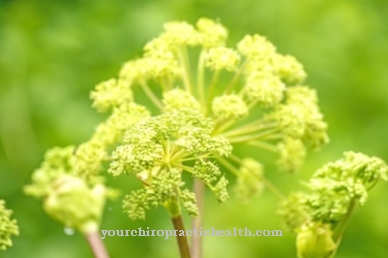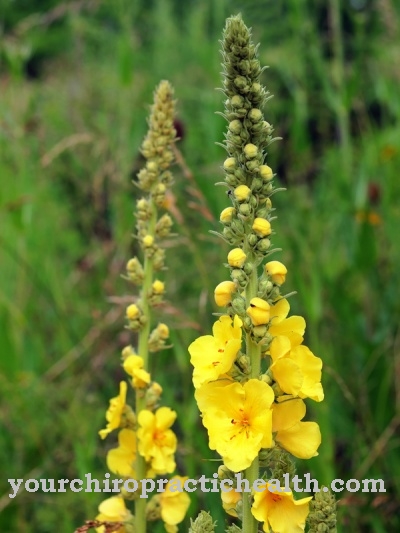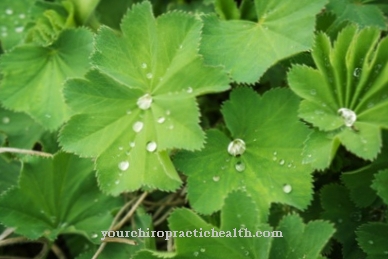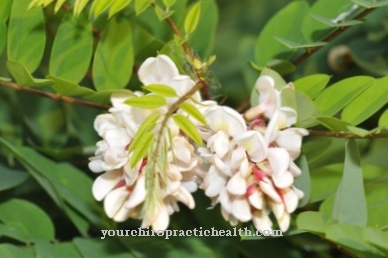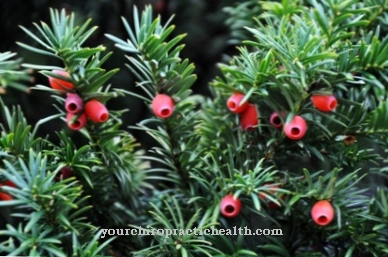The Marsh marigold Use as a medicinal plant. Today it is rarely used. Nevertheless, their diuretic, spasmodic and expectorant effects can be used in numerous diseases. Due to the strong change in our landscapes, however, it is already on the red list in some federal states and is considered endangered.
Occurrence & cultivation of the marsh marigold

In early spring the plant sprouts strong green leaves - also on the stems. Between March and May the marsh marigold flowers in an intense sun yellow. Even if it looks very similar to the buttercup family, you can easily distinguish it by its round, shiny, greasy leaves.
The distribution region of the marsh marigold is circumpolar. Accordingly, it finds ideal growth conditions in all of Europe, North Asia and into arctic North America. The name already indicates its preferred location: the yellow-flowering plant can be found in damp places, especially on river banks and swamps. It prefers nutrient-rich soils, which it also finds on damp swamp meadows, floodplain and swamp forests, at springs and streams. The marsh marigold is therefore also a reliable indicator of humidity and moisture.
Effect & application
As with numerous other plants that are used in naturopathy, the marsh marigold is slightly poisonous to poisonous. The concentrations in which this applies is not clearly defined. Some of the green leaves are consumed as wild lettuce, others advise against using them entirely. Nevertheless, as a precaution, this plant should only be used dried, externally or prepared homeopathically. Recipes are only taught in folk medicine and here, too, the marsh marigold is rarely used.
Their toxic effect is based on the anemonines, saponins, apochinal alkaloids and triterpene cones they contain. These secondary plant substances are found in all buttercups. Eating raw leaves or buds causes irritation of the mucous membranes, throat and nasal passages. The poison can also cause vomiting, bloody diarrhea, fainting, seizures and water retention.
In very sensitive people, mere skin contact leads to irritation and swelling. Burns to the skin are also possible. These usually occur after four to five hours. In the event of poisoning, the intake of activated charcoal or a gastric lavage helps. Boiling the plant will reduce the toxic effect. It is completely lost when it dries. A tea can therefore be taken safely.
Other components of the marigold are choline, flavonoids, protoanemonin and carotene. In the Middle Ages this plant was used for liver diseases. This followed the widespread signature theory. The color yellow was associated with liver and bile. The term jaundice is also used in this context. Since the marsh marigold blooms intensely yellow, it was assigned to these complaints.
Today the marsh marigold is occasionally used in the form of tea mixtures for coughing. The saponins contained have an expectorant and anticonvulsant effect. This buttercup is also used in homeopathy. Under its scientific name Caltha palustris, it is available in potencies D3 to D6 and is used for coughs, inflammation of the skin and menstrual cramps. With the latter symptoms, the person affected also benefits from the anticonvulsant effect.
In addition, the marsh marigold was used in the past as a coloring agent for dairy products and luxury foods. It was also an integral part of a few national kitchens. Among other things, they served as a substitute for capers when they were pickled in vinegar. However, caused upset stomach after consumption.
Importance for health, treatment & prevention
In general, the components of the marigold have a diuretic, skin-irritating, anticonvulsant and expectorant effect. This results in numerous treatment options. The expectorant and anticonvulsant effects are particularly useful in diseases of the upper respiratory tract. This can reduce coughs and bronchitis. The antispasmodic effect also helps women with menstrual cramps. Due to its diuretic effect, it can also be used for biliary and liver problems, as well as rheumatic diseases. Because the increased excretion makes it possible for the body to detoxify. Regular detoxification is recommended, especially for rheumatism patients.
It can also be used for inflammatory skin diseases. The use of warts has been reported positively. Furthermore, products made from dried marsh marigolds are said to help with general weak nerves and migraines. It is also known that the toxic component anemonine is said to be effective against tumors.
Most of the application examples are handed down from the Indian culture. Here, the marsh marigold is also used in the case of flu to make the body sweat and increase the fever. The yellow flowering herb is also used to induce vomiting when the stomach is upset. Furthermore, the Indian peoples associate an aphrodisiac effect with the flowers of the marsh marigold and use them for all kinds of love spells.
Basically, the marsh marigold is used very rarely. If this is done, then only in dried form, externally or prepared homeopathically. This avoids any possible risk of poisoning. Particular caution is required with pregnant and breastfeeding women, they should not come into contact with any components.

